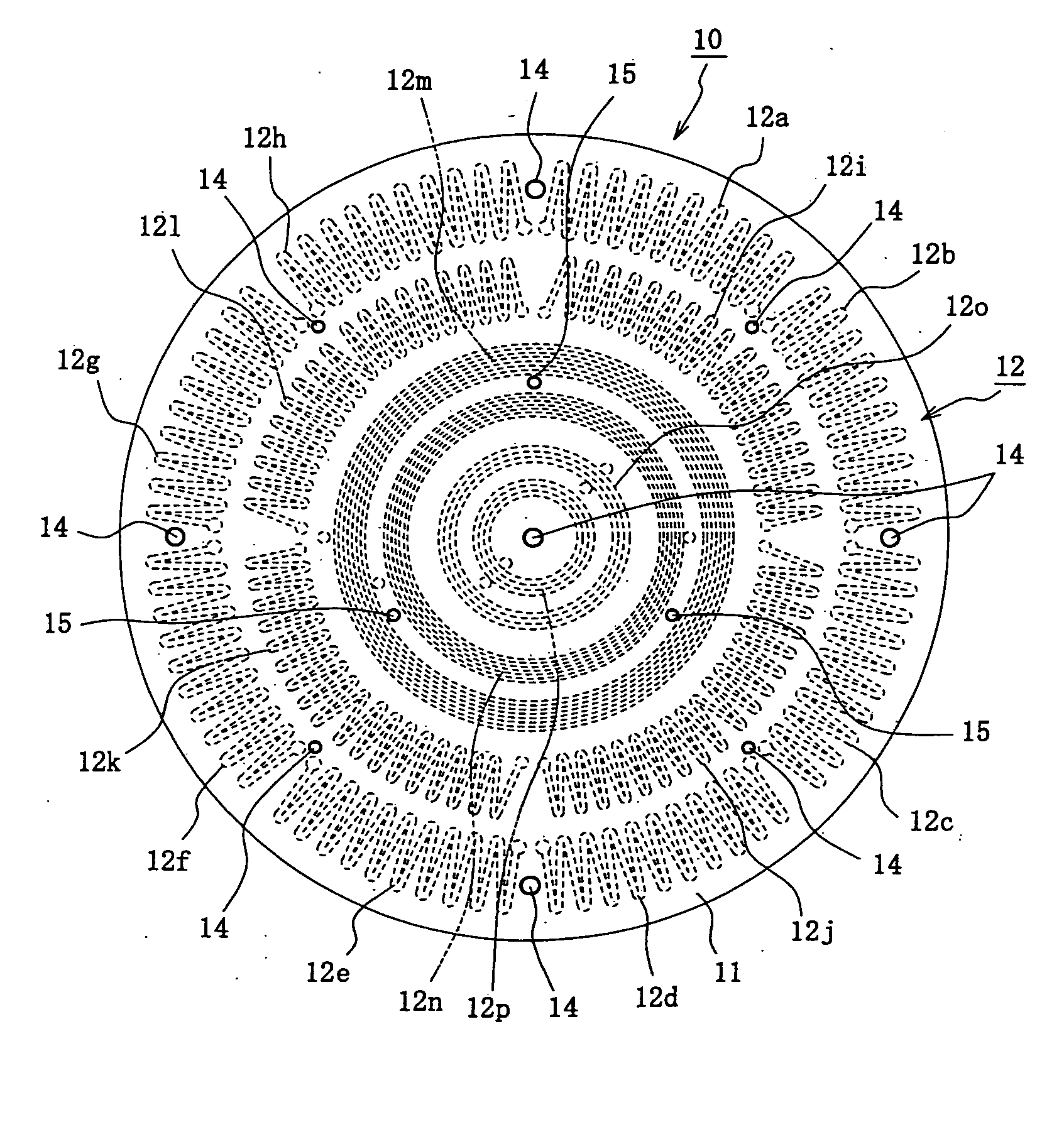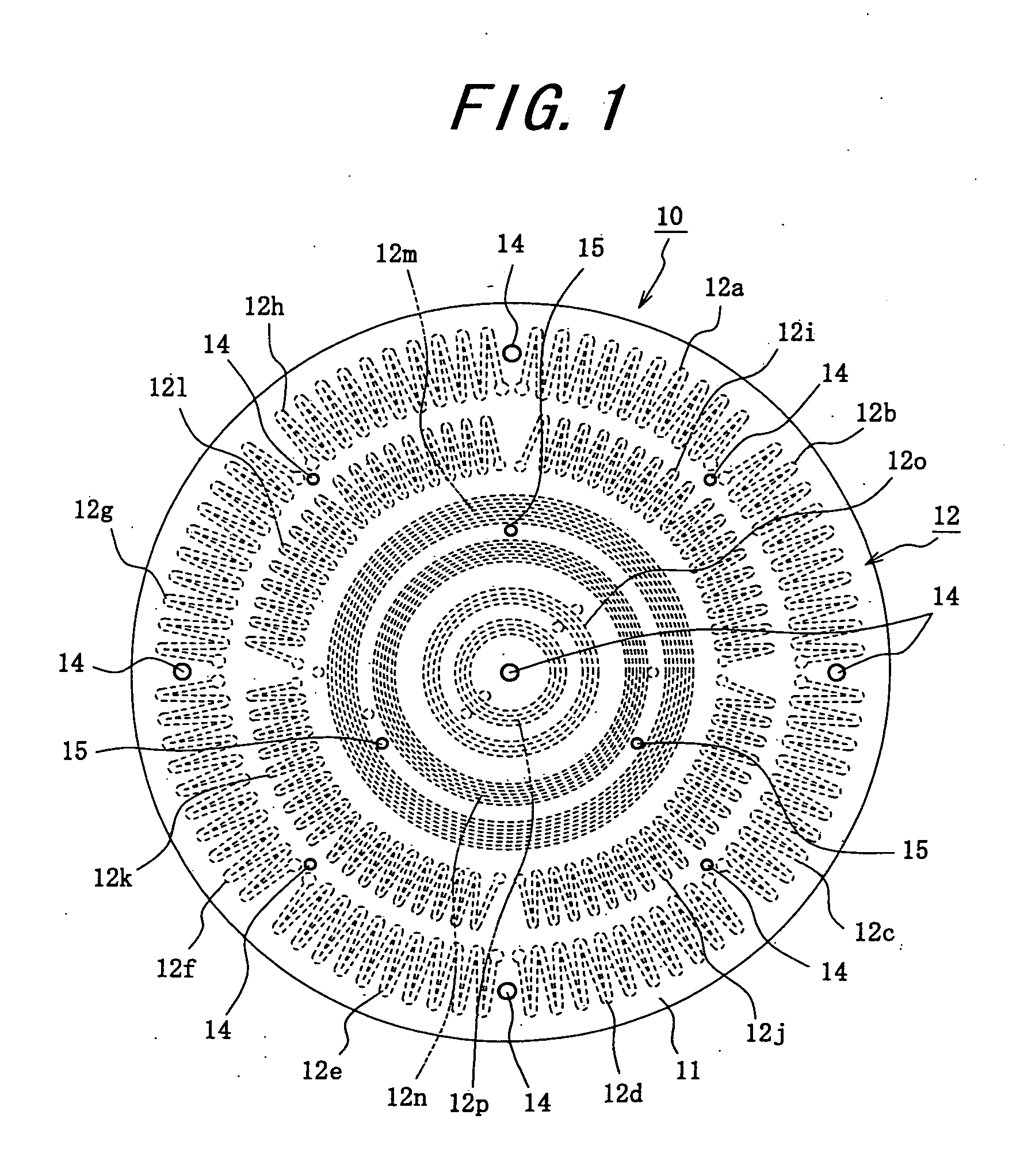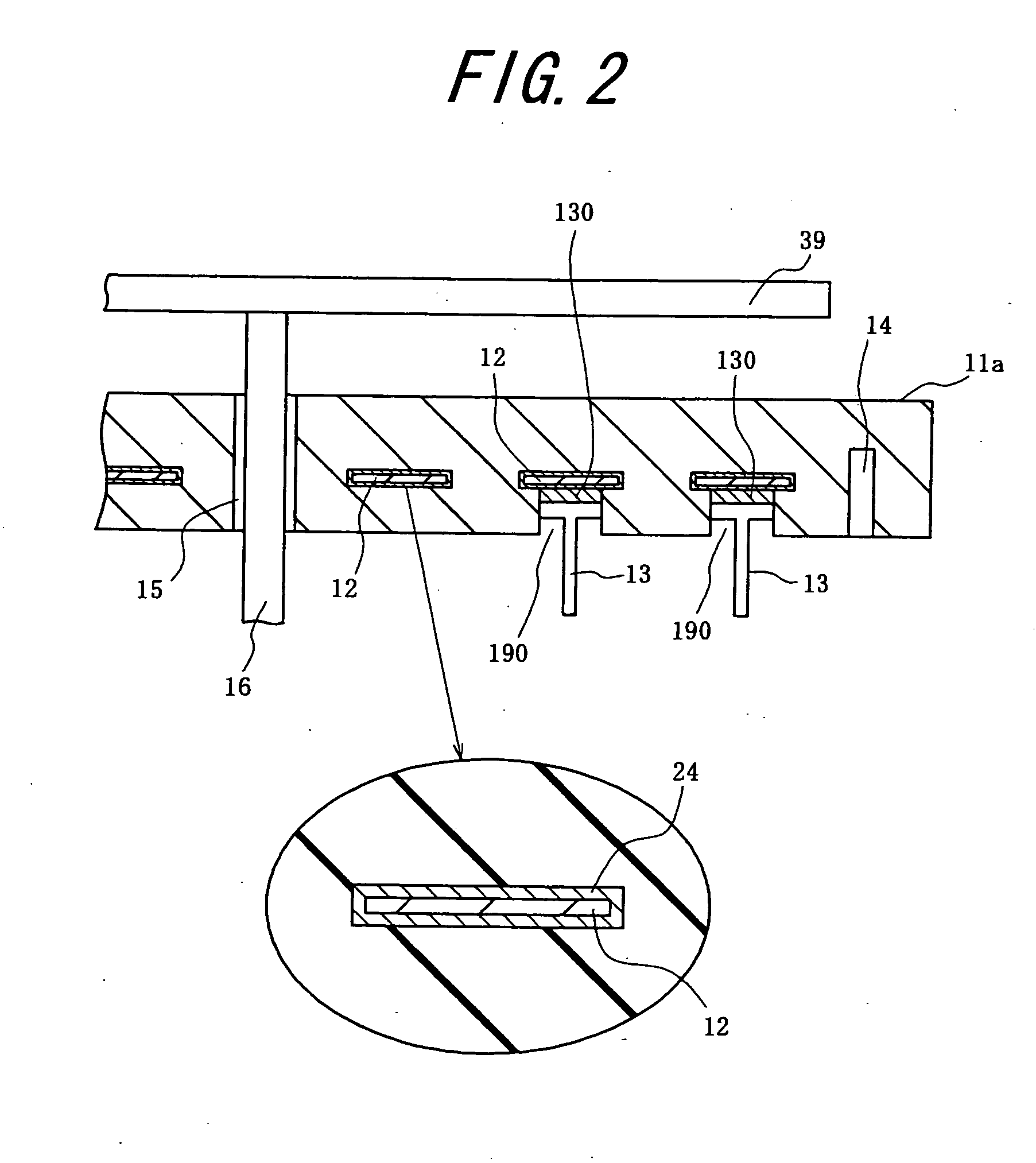Ceramic heater
a ceramic heater and ceramic technology, applied in the field of ceramic heaters, can solve the problems of cracks that are apt to be easily caused by the weight of the heater, the inclination of the silicon wafer placed on the metal plate, and the cracks of the heater
- Summary
- Abstract
- Description
- Claims
- Application Information
AI Technical Summary
Benefits of technology
Problems solved by technology
Method used
Image
Examples
example 1
Production of Ceramic Heater (see FIGS. 1, 2 and 7)
[0167] (1) A carbon sheet 42 is prepared by cutting a carbon block consisting of graphite and glassy carbon (made by IBIDEN Co., Ltd.: T-4 / ET-10) into a thickness of 200 μm. The carbon sheet 42 is subjected to a looter working to prepare a resistor heating body 12 having a pattern consisting of bending curve and concentric circles shown in FIG. 1.
[0168] Further, an aqueous solution of 1 mol / l yttrium nitrate is applied and dried on the surface of the resistor heating body 12.
[0169] (2) A plate-shaped body having a thickness of 1.5 mm is prepared by subjecting a paste of a mixture of 100 parts by weight of aluminum nitride powder (made by Tokuyama Co., Ltd. average particle size: 1.1 μm), 4 parts by weight of yttrium oxide (Y2O3: yttria, average particle size: 0.4 m), 11.5 parts by weight of acrylic resin binder, 0.5 part by weight of a dispersing agent and 53 parts by weight of an alcohol consisting of 1-butanol and ethanol to a ...
example 2
Production of Ceramic Heater (see FIGS. 1, 2 and 8)
[0180] (1) A carbon block consisting of graphite and glassy carbon (T-4 / ET-10, made by IBIDEN CO., Ltd.) is cut in a thickness of 0.6 mm to prepare a carbon sheet 52. This carbon sheet 52 is subjected to a looter working to prepare a resistor heating body 12 having a pattern consisting of bent curve and concentric circles as shown in FIG. 1.
[0181] (2) A plurality of green sheets 50 having a thickness of 0.47 mm are prepared by shaping a paste of a mixture of 100 parts by weight of aluminum nitride powder (made by Tokuyama Co., Ltd. average particle size: 1.1 μm), 4 parts by weight of yttrium oxide (Y2O3, average particle size: 0.4 μm), 11.5 parts by weight of an acrylic resin binder, 0.5 part by weight of a dispersing agent and 53 parts by weight of an alcohol consisting of 1-butanol and ethanol through a doctor blade process.
[0182] After the green sheet 50 is dried at 80° C. for 5 hours, a portion corresponding to a through-hole...
example 3
Production of Electrostatic Chuck (see FIG. 4)
[0189] (1) A carbon block consisting of graphite and glassy carbon (T-4 / ET-10, made by IBIDEN CO., Ltd.) is cut in a thickness of 0.6 mm to prepare a carbon sheet. This carbon sheet is subjected to a looter working to prepare a resistor heating body 320 having a pattern consisting of bent curve and concentric circles as shown in FIG. 1.
[0190] Further, an aqueous solution of 1 mol / l yttrium nitrate is applied onto the surface of the resistor heating body 320 and dried.
[0191] (2) Next, a sheet-shaped body having a thickness of 0.5 mm is prepared by shaping a paste of a mixture of 100 parts by weight of aluminum nitride powder (made by Tokuyama Co., Ltd. average particle size: 1.1 m), 4 parts by weight of yttrium oxide (Y2O3, yttria, average particle size: 0.4 μm), 11.5 parts by weight of an acrylic resin binder, 0.5 part by weight of a dispersing agent and 53 parts by weight of an alcohol consisting of 1-butanol and ethanol through a do...
PUM
| Property | Measurement | Unit |
|---|---|---|
| thickness | aaaaa | aaaaa |
| distance | aaaaa | aaaaa |
| width | aaaaa | aaaaa |
Abstract
Description
Claims
Application Information
 Login to View More
Login to View More - R&D
- Intellectual Property
- Life Sciences
- Materials
- Tech Scout
- Unparalleled Data Quality
- Higher Quality Content
- 60% Fewer Hallucinations
Browse by: Latest US Patents, China's latest patents, Technical Efficacy Thesaurus, Application Domain, Technology Topic, Popular Technical Reports.
© 2025 PatSnap. All rights reserved.Legal|Privacy policy|Modern Slavery Act Transparency Statement|Sitemap|About US| Contact US: help@patsnap.com



